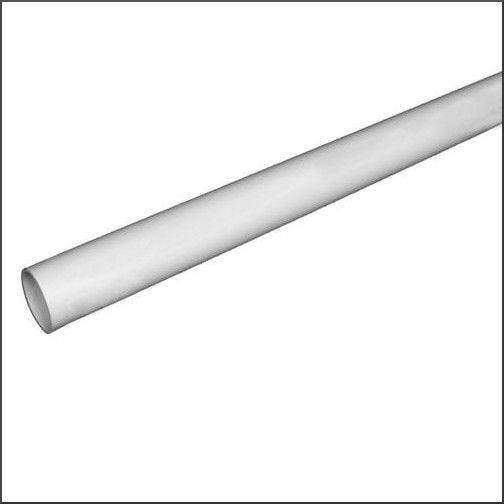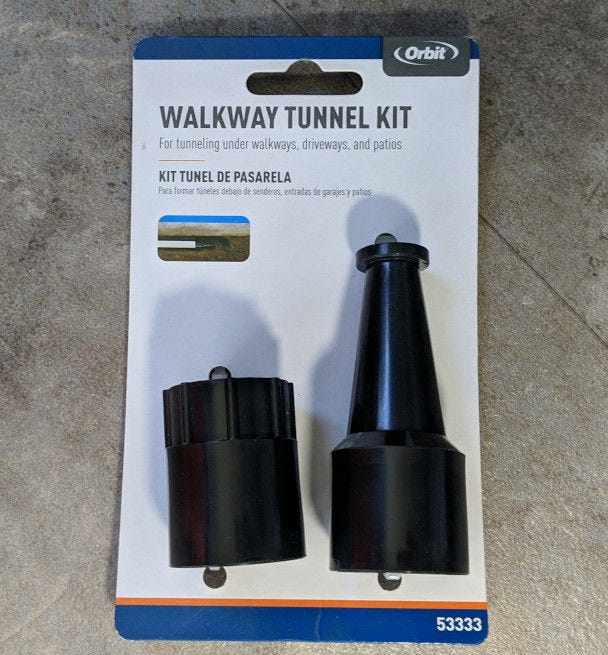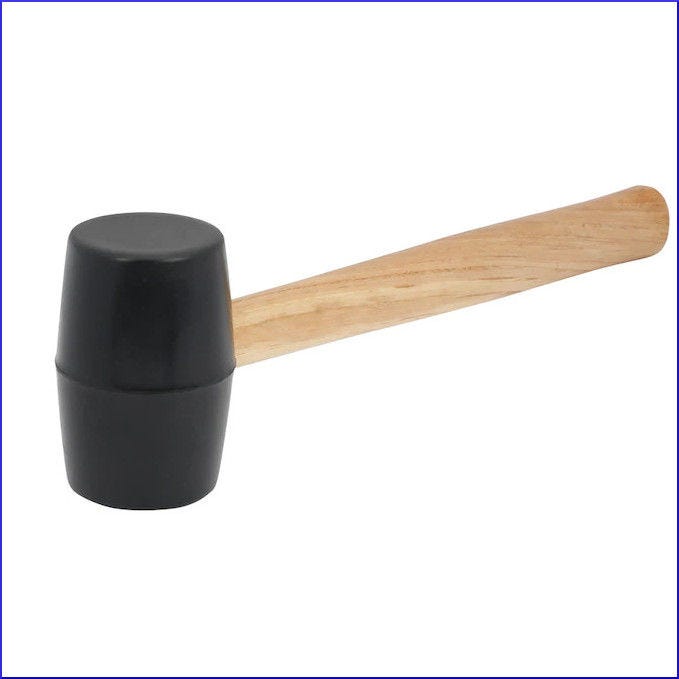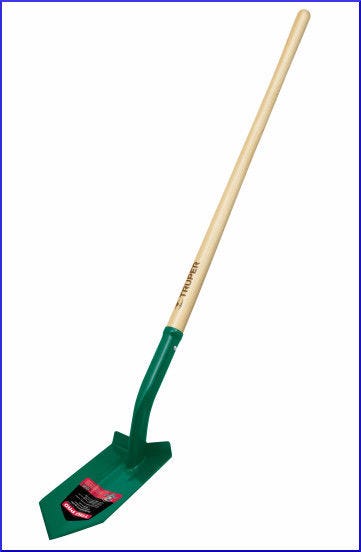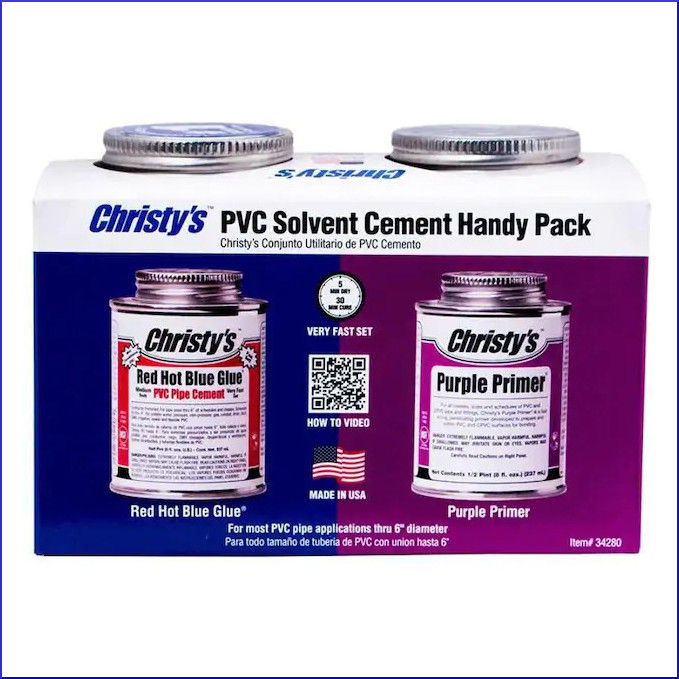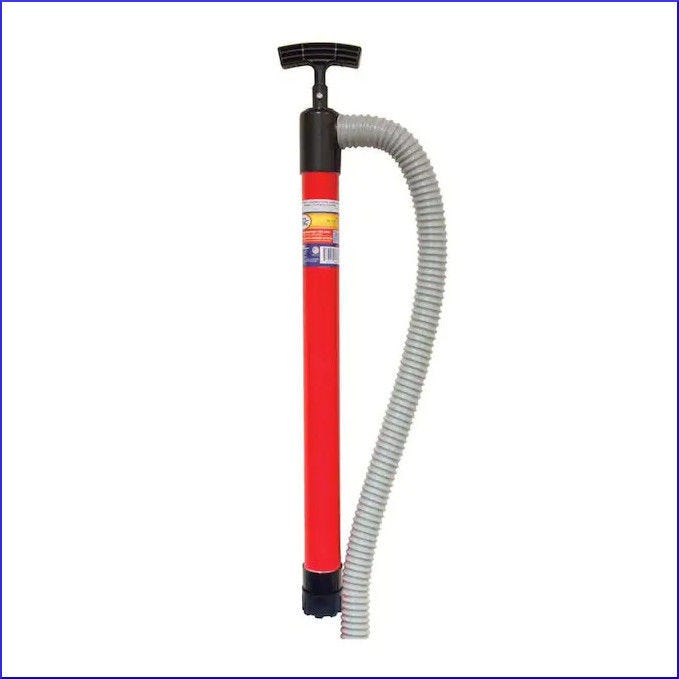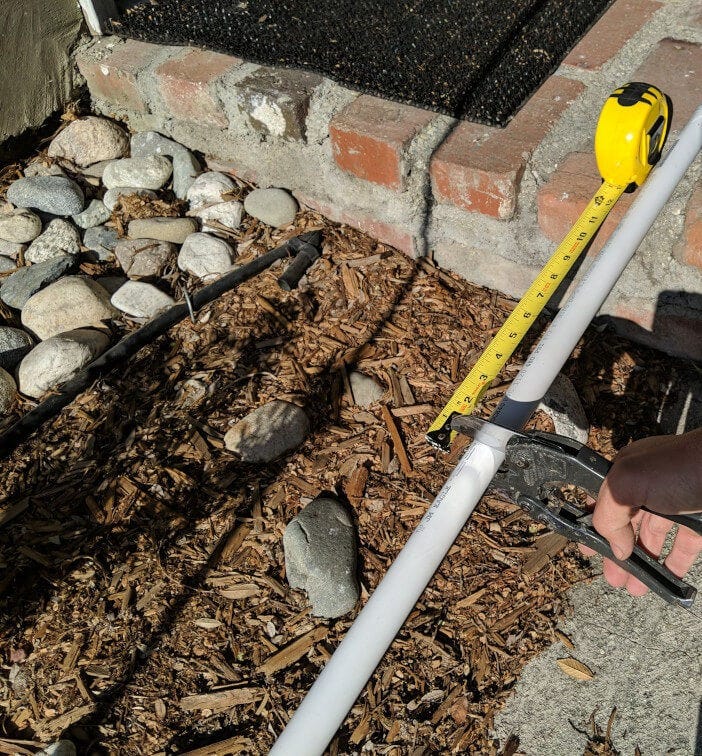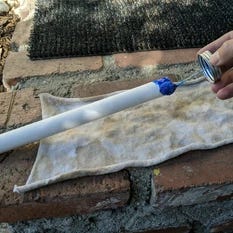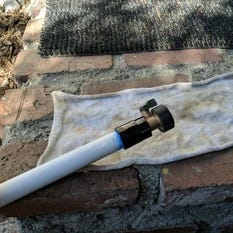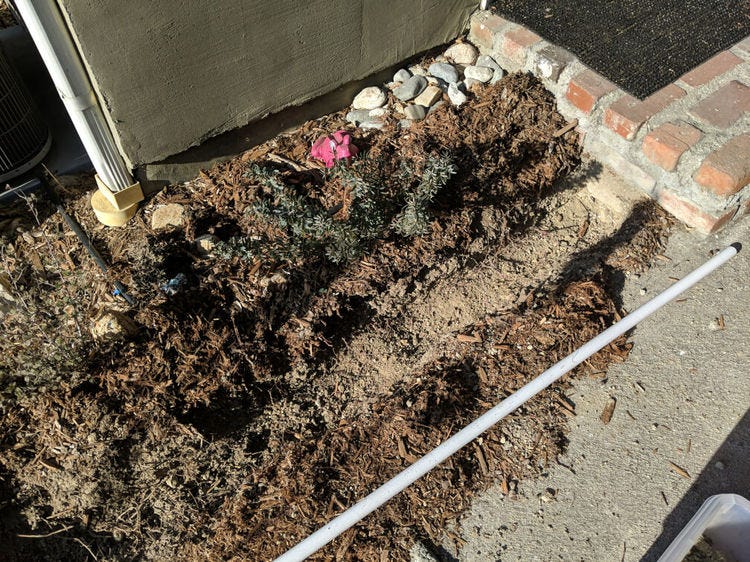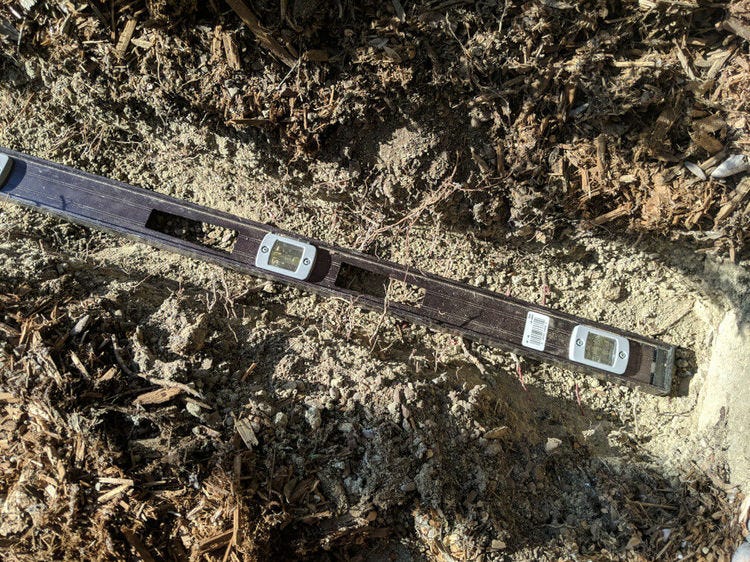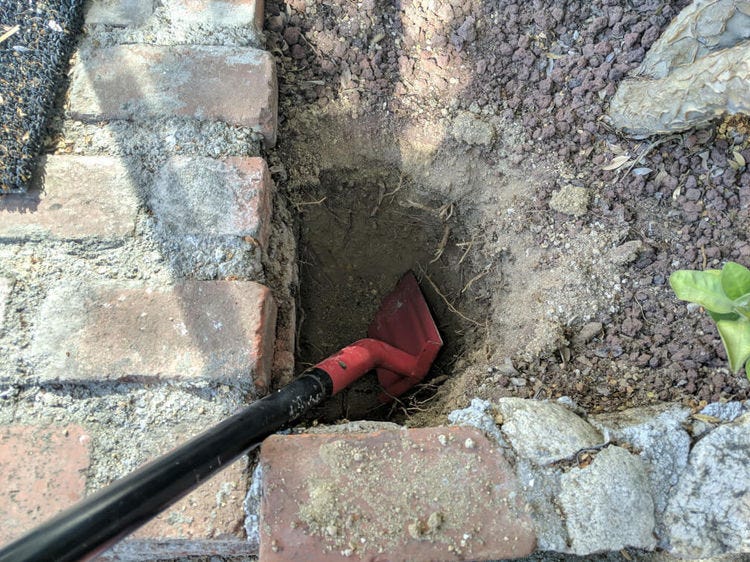How To Run a Pipe Under a Walkway
Running a pipe under a pathway can seem daunting. Here is a simple way to do it without hiring an expensive plumber or heavy equipment.

As a Garden Designer, I often design gardens that have concrete walkways. These walkways can make it difficult to install irrigation, or run wires for lighting. Sometimes, you need a pipe to connect your irrigation or as a conduit for a wire. How do you place the pipe under concrete? Many homeowners worry that running a pipe under a concrete step, patio or path is too much work. They think they will need to hire an expensive plumber. It seems very intimidating to do this. In actual fact, this is not hard to do on your own with a little elbow grease.
In this post, we are going to show you how we ran a pipe under a concrete step to run irrigation into a plant bed.
To do this, you will need a garden hose and the following items:
3/4" (20 mm) PVC Pipe
Orbit Walkway Tunnel Kit
Rubber Mallet
Trenching Shovel
PVC Glue
PVC Pipe Cutter
Hose Shut-off Valve
Shopping List
3/4" (20 mm) PVC Irrigation Pipe (at least 2 ft longer than the width of the walkway you need to tunnel under).
If there a multiple versions, choose the pipe with the thickest walls. In North America, always use the pipe labeled "SCH 40".
Orbit Walkway Tunnel Kit.
Alternative set-up if Tunnel Kit is not available locally: in your local hardware store, get a "Slip x FHT PVC Hose Fitting" for attaching the hose to the pipe and a "Slip x MHT PVC Hose Fitting" for the other end of the pipe. A Sweeper Jet Hose Nozzle can be screwed onto this end.
Rubber Mallet
Trenching Shovel
PVC Glue
PVC Pipe Cutter
Hose Shut-off Valve
(OPTIONAL) Siphon Pump
Step 1 - Assembling the tunnel kit
Measure the width of the walkway you need to run the pipe underneath. Cut the PVC pipe to the same length plus an extra 2 ft (0.6 m) on each end.
Using the PVC glue, attach the 2 pieces of the tunnel kit to each end of the pipe. Remove the rubber washer from the threaded piece. Make sure you twist the fitting while gluing to ensure even sealing with the glue. Leave to dry for as long as required per manufacturer, or at least 1 hour.
Re-insert the rubber washer and screw the Shut-off valve to the threaded fitting of the tunnel kit. Attach a garden hose to the Shut-off valve.
Close the shut-off valve (the handle turned perpendicular to the hose is in the OFF position). Turn on water at the hose faucet (spigot).
This will pressure test your tunnel kit to ensure there no leaks.
If you have no leaks, turn the shut-off valve to the ON position and you should get a steady jet of water out of the nozzle. Your tunnel kit is now assembled and ready for use.
Step 2 - Digging a Trench to line up your pipe
Starting from the side you want to run your pipe from, dig the soil next to the concrete until you can see at least 2" (5 cm) of soil under the concrete.
Next, dig back from the concrete to create a narrow trench that is as deep and long as your tunnel kit plus an extra 12" (30 cm).
Check to make sure the bottom of the trench is level or slopes up towards the concrete. If the trench slopes down, the pipe will run at an angle and may come out the other side much deeper than it was inserted.
Once you are satisfied with the trench, dig a little under the concrete where you will be inserting the pipe. This prevents excessive spray from the nozzle when you insert the pipe. Move to the opposite side of the walkway. Dig a hole that is a few inches deeper and about 12" (30 cm) wide or as much as the space allows. When the pipe is pushed under the concrete, it may hit a rock that pushes the pipe to the side. This means the pipe may not exit completely parallel to it's entry on the other side. This is why we make this a wider hole than the trench.
Step 3 - running the pipe under the walkway
Lay the tunnel kit down in your trench with the nozzle pointed to the soil under the concrete. Make sure the shut-off valve is in the OFF position, then turn on the hose faucet. When you are ready, hold the PVC pipe with one hand and turn the shut-off valve to the on position. Start pushing the nozzle into the soil with slight back and forth motion. With each push, you should feel the pipe moving further under the concrete. If you feel any resistance, the back and forth motion will break up the obstruction. Feel free to apply a little extra force, the nozzle is pretty tough.
While doing this, your trench will fill up with water and will need to be removed. Turn the shut-off valve to the OFF position. If you have a siphon pump, use this to remove water. If you don't have a pump, a plastic cup or bowl can be used to scoop the water out.
Once the nozzle is close to the hole you dug on the opposite side, the water will start jetting out into the hole. You should be able to hear it when it close to breaking through. Push a little more until the nozzle fitting clears the concrete.
If you have less than 2 ft (0.6 m) of pipe left on the entry side, but there is no water in the opposite hole, the nozzle may have angled down. The nozzle is now below your hole so dig a little deeper to find it. At this point, turn the shut-off valve to the OFF position and turn off the water at the hose faucet. Open the shut-off valve to let the remaining water drain. Disconnect your hose and shut-off valve from the tunnel kit fitting.
There needs to be at least 3" (8 cm) of pipe between the nozzle fitting and the edge of the walkway. If the nozzle is too close and you cannot push it by hand, tap the end of the pipe with a rubber mallet until it clears.
Step 4 - Finishing Up
Your pipe is now under the walkway and accessible from both sides. Cut the pipe to remove the fittings on each side. The cut pipe should extend at least 3" away from the concrete on each side.
If the pipe is for irrigation, it can now be connected to your irrigation system.
For connection to drip tubing: glue on 90° elbows on each end and then glue pipe to the elbows with enough length to clear the ground above by at least 6". Cover the ends of the pipe to prevent dirt entering the pipe and then refill the holes.
Cut the vertical pipes down to ground level. Attach elbows for connecting to your preferred drip tubing adapter.
You can also use this type of pipe as conduit for lighting or other type of electrical cable. Run the cable through the pipe using fish tape. Seal it with electrical tape before back filling your holes.





